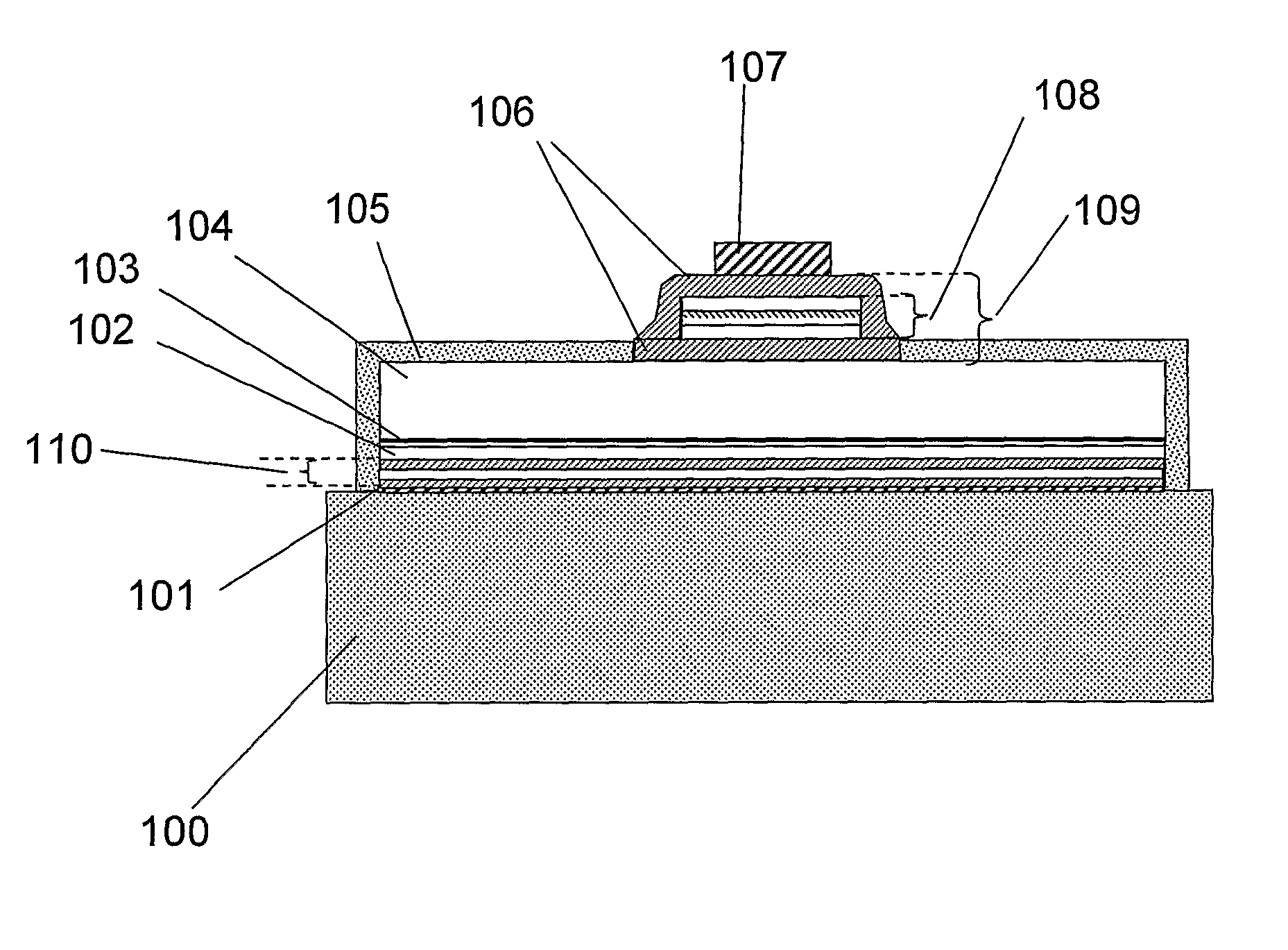Vertical light emitting diodes
a light-emitting diode and vertical technology, applied in the direction of solid-state devices, electric lighting sources, electric light sources, etc., can solve the problems of low extraction efficiency of leds, loss introduced to the trapped waveguide mode, and the existence of optically lossy metal contacts in the close vicinity of light-emitting heterostructure, etc., to achieve low optical loss top contact and low optical loss bottom reflector
- Summary
- Abstract
- Description
- Claims
- Application Information
AI Technical Summary
Benefits of technology
Problems solved by technology
Method used
Image
Examples
Embodiment Construction
[0059]The present invention provides high wall plug efficiency light emitting devices by improving both the light extraction efficiency as well as the injection efficiency. The invention can be incorporated in a light emitting device of any semiconductor material system such as, but not restricted to, InGaN, InGaP, InGaAs, InP, or ZnO. A GaN based LED having an epitaxial layer formed on a sapphire substrate is used as an example in the present invention.
[0060]GaN light emitting devices comprise a p-n junction heterostructure of refractive index about 2.45. When the light emitting device is forward biased, spontaneously-emitted photons are generated. If the wavevector of the photon resides below the light line (in a frequency-wavevector diagram) of the material, the photon is totally internally reflected and trapped in the high refractive index of the epi-material.
[0061]Table 1 below lists the approximate extraction enhancement achieved using the different techniques commonly employe...
PUM
 Login to View More
Login to View More Abstract
Description
Claims
Application Information
 Login to View More
Login to View More - R&D
- Intellectual Property
- Life Sciences
- Materials
- Tech Scout
- Unparalleled Data Quality
- Higher Quality Content
- 60% Fewer Hallucinations
Browse by: Latest US Patents, China's latest patents, Technical Efficacy Thesaurus, Application Domain, Technology Topic, Popular Technical Reports.
© 2025 PatSnap. All rights reserved.Legal|Privacy policy|Modern Slavery Act Transparency Statement|Sitemap|About US| Contact US: help@patsnap.com



